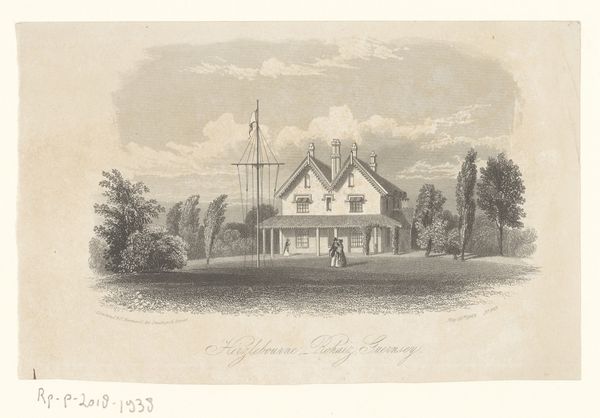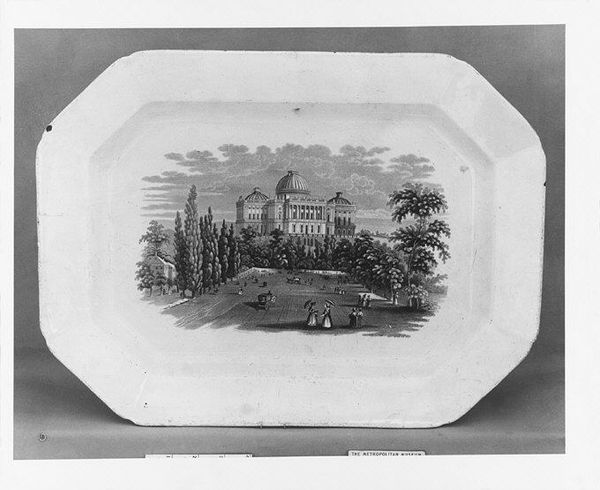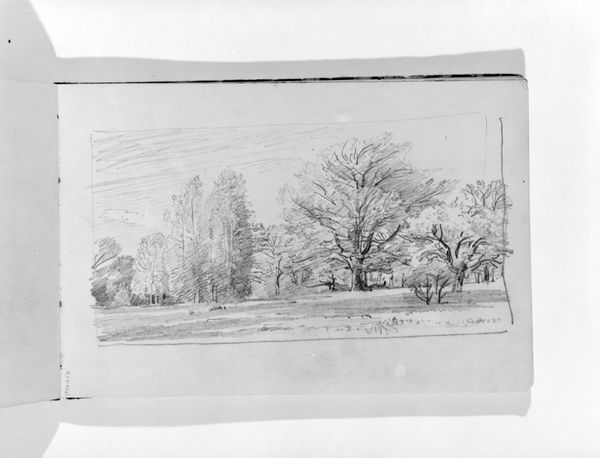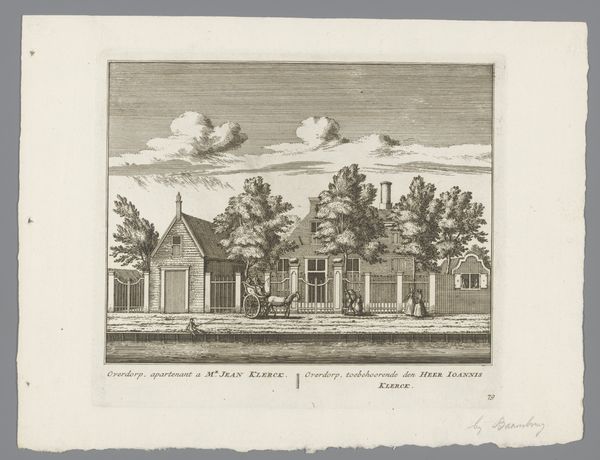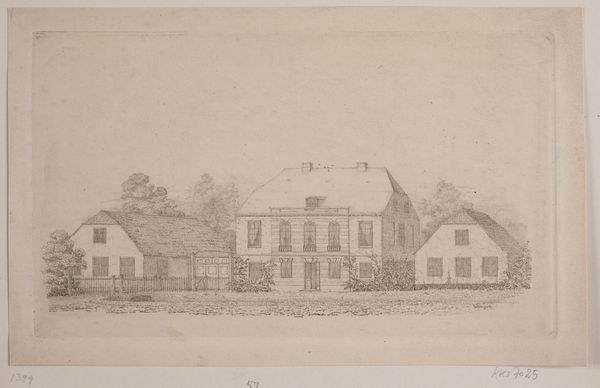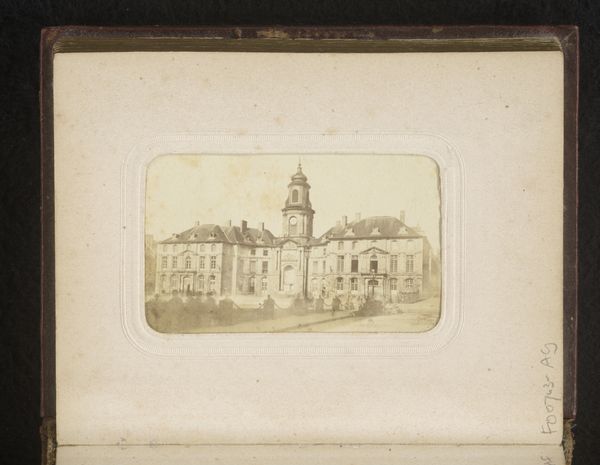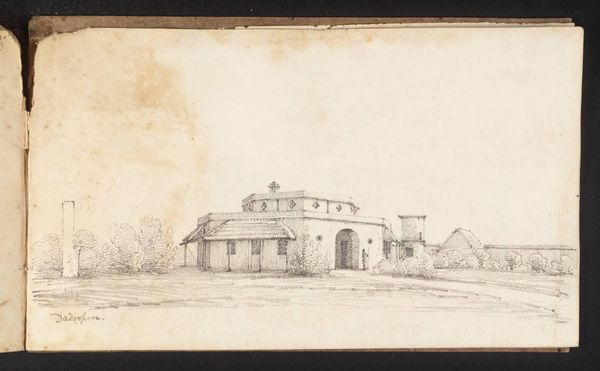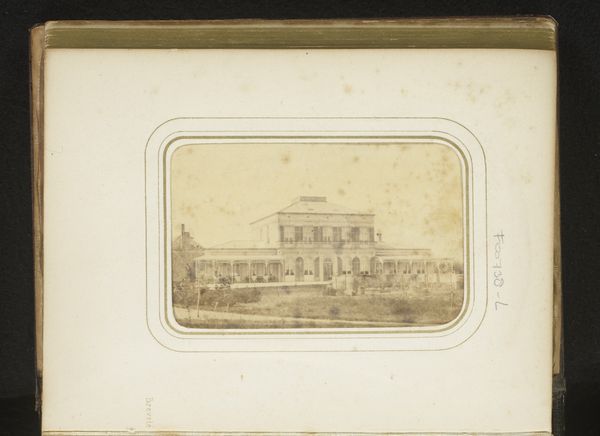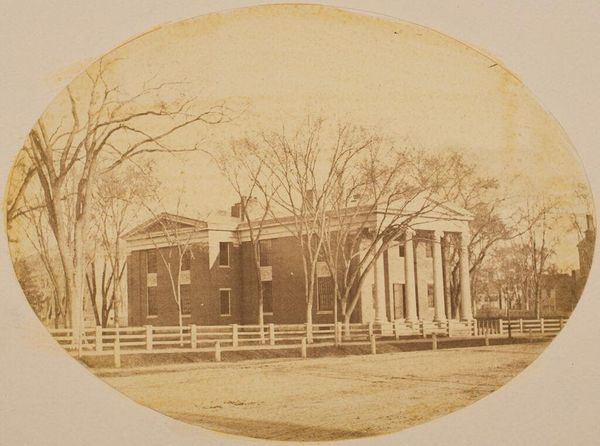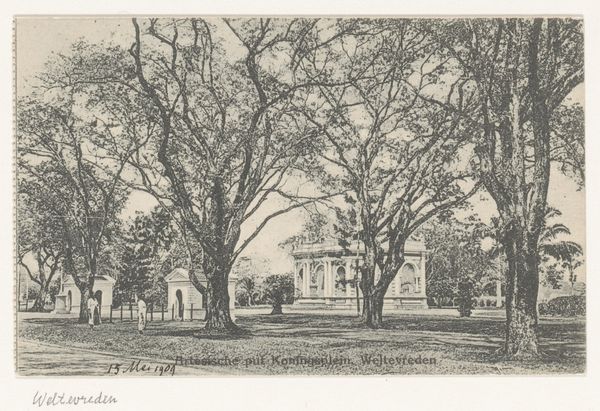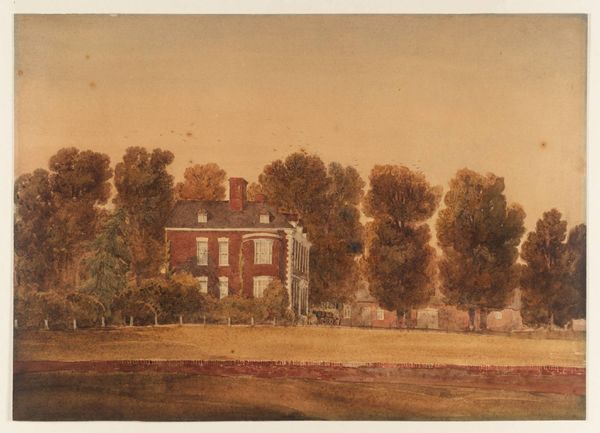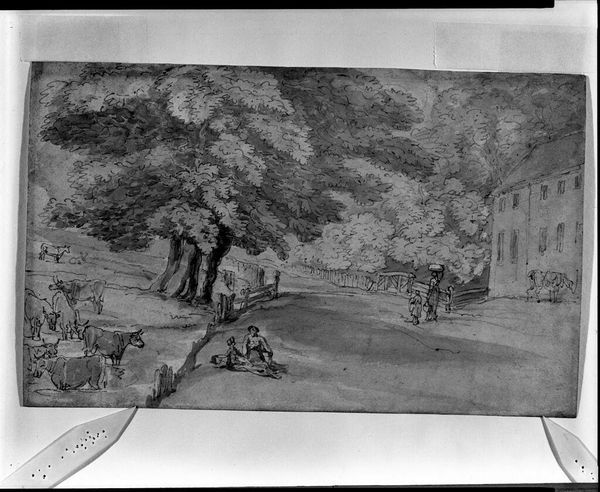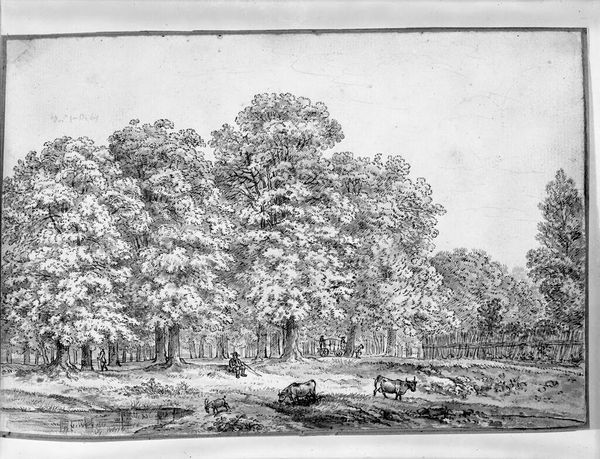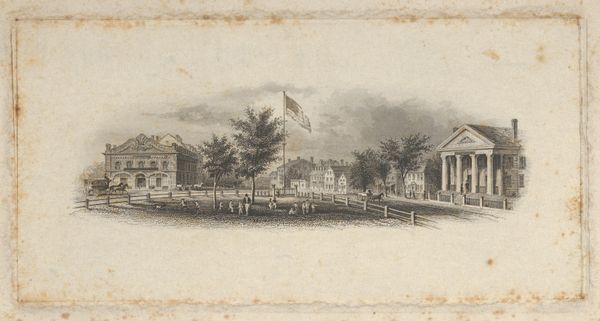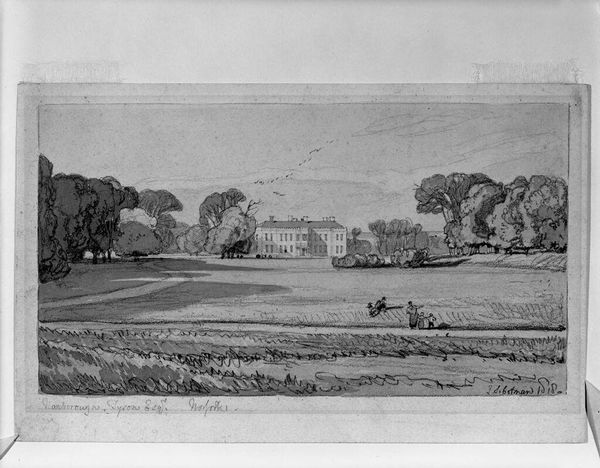
Courthouse at Richmond, Staten Island, New York 1867 - 1877
0:00
0:00
drawing, print, pencil
#
pencil drawn
#
drawing
# print
#
pencil sketch
#
landscape
#
pencil drawing
#
pencil
#
hudson-river-school
#
cityscape
#
realism
#
building
Dimensions: image: 4 13/16 x 7 3/16 in. (12.2 x 18.3 cm) sheet: 6 1/4 x 8 9/16 in. (15.9 x 21.7 cm)
Copyright: Public Domain
Curator: This pencil drawing, "Courthouse at Richmond, Staten Island, New York," by Augustus Kollner, completed sometime between 1867 and 1877, offers a compelling snapshot of civic architecture. Editor: My first impression is almost dreamlike. The soft gray washes and delicate pencil lines give it a hazy, nostalgic feel, like a memory fading at the edges. Curator: It’s intriguing how Kollner situates the courthouse, a symbol of authority and justice, within a broader landscape. We see these figures in the foreground—presumably citizens, perhaps lawyers or petitioners—engaged in conversation. The scene subtly points towards ideas of civic participation and the intersection of law with everyday life. The work participates in the tradition of Hudson River School art and the development of realist practices in art. Editor: Totally. There's almost a theatrical element. The building sits atop a hill like it is posing for a photograph, as though staged, like a tableau vivant ready to whisper its tales if only we leaned in close enough. Makes you think, what stories are held within those walls, what injustices and victories played out there? And how the history is literally etched into its walls? Curator: I'm drawn to your read on that. Viewing architecture as witness or storyteller opens avenues into considering how institutions like courthouses impact communities. And to go further with that, one could consider how systems of law intersect with issues of race, class, and gender—shaping life outcomes for those in proximity to such establishments, both past and present. The fact that we don’t see specifically who the individuals represented are brings to bear the long legacies of racial injustice. Editor: It is interesting the scale of justice within this small scale piece, and the vast empty land between it. It almost reads as a meditation, right? Maybe Kollner intended it that way? To consider, and reconsider… Curator: Well, these explorations help us better interpret artworks and engage with histories! Editor: Precisely! It is nice that we can pause and observe things to make them new in conversation with old artwork.
Comments
No comments
Be the first to comment and join the conversation on the ultimate creative platform.
